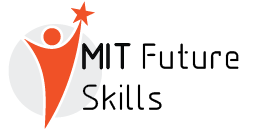A gap year, a deliberate break from traditional education, is a transformative journey that offers individuals a unique chance for personal growth, exploration, and learning beyond the conventional classroom setting.
In this comprehensive guide, we navigate the diverse educational pathways that a gap year can offer, providing insights to help individuals make informed decisions and maximize the enriching potential of this significant break.
Understanding the Concept of a Gap Year
A gap year, characterized by a purposeful break from traditional education, offers individuals a transformative period for self-discovery, exploration, and experiential learning.
It goes beyond conventional academic pursuits, encouraging a holistic approach that fosters personal growth, cultural understanding, and the development of valuable life skills.
The concept of a gap year has evolved over time and is not limited to a specific age group. While some students choose to embark on a gap year immediately after completing high school or before starting college, others may take a break between different stages of their academic or professional journey.
The essence of a gap year lies in its flexibility and the chance it offers to step off the expected trajectory, encouraging individuals to gain a broader perspective on life.
Gap Year Programs and Opportunities
Exploring tussenjaar programma reveals a spectrum of opportunities, from international volunteering and work-travel experiences to enriching internships, providing diverse paths for personal and professional development. Gap year programs and opportunities encompass a wide range of experiences tailored to cater to diverse interests and goals.

1. Cultural Immersion and Travel
- One of the most popular facets of gap year programs involves traveling to different parts of the world, immersing oneself in diverse cultures, and gaining a firsthand understanding of global perspectives.
- Opportunities may include language immersion programs, volunteer work in international communities, or participation in cultural exchange initiatives.
2. Volunteering and Service Projects
- Many gap year participants choose to dedicate their time to meaningful volunteer work, contributing to various social causes, environmental conservation efforts, or community development projects.
- This hands-on experience not only makes a positive impact but also fosters a sense of social responsibility and empathy.
3. Internships and Professional Development
- Gap year programs offer opportunities for individuals to gain practical work experience through internships in their field of interest.
- This exposure helps participants develop valuable skills, build a professional network, and gain insights into potential career paths.
Educational Travel and Cultural Immersion
Educational travel and cultural immersion open avenues for a holistic learning experience, where language immersion programs deepen linguistic skills and academic tours intertwine knowledge with real-world exploration.
As a multifaceted concept, educational travel and cultural immersion provide participants with an opportunity to delve into various aspects of history, language, social structures, and traditions, fostering a deeper understanding of global interconnectedness.
1. Exploring Historical and Architectural Marvels
- Educational travel often involves visits to historical sites and architectural marvels, allowing participants to witness the tangible remnants of different civilizations.
- Immersing oneself in the rich historical context of a place enhances appreciation for cultural heritage and the evolution of societies.
2. Language Learning and Communication Skills
- Cultural immersion offers an ideal environment for language learning, allowing participants to practice and improve their language skills in authentic settings.
- Communicating with native speakers not only enhances linguistic abilities but also facilitates cross-cultural understanding and connections.
3. Experiencing Local Traditions and Customs
- Participants in cultural immersion programs have the opportunity to actively engage in local traditions, customs, and rituals.
- Participating in cultural festivals, ceremonies, or daily routines provides insights into the values and practices that shape a community.
Self-Designed Gap Year Projects

Embarking on self-designed gap year projects empowers individuals to tailor their experiences, whether delving into personal passions, launching entrepreneurial ventures, or honing specific skills for success.
The autonomy of self-directed projects fosters a sense of ownership and purpose, contributing to a transformative and uniquely crafted educational journey.
1. Personalized Learning Objectives
- Self-designed gap year projects commence with the identification of individual online learning objectives and goals. Participants have the liberty to define what success looks like for them, ensuring a purposeful and meaningful experience.
- These objectives could range from developing specific skills, gaining cultural insights, embarking on entrepreneurial endeavors, or even addressing personal challenges for holistic growth.
2. Tailored Skill Development
- One of the primary advantages of self-designed projects is the ability to focus on skill development tailored to individual interests and career aspirations.
- Whether it involves online learning a new language, acquiring technical skills, or delving into creative pursuits, participants can curate experiences that align with their long-term objectives.
3. Entrepreneurial Ventures
- Some participants choose to use their gap year for entrepreneurial ventures, initiating projects that involve starting a small business, social enterprise, or community project.
- This hands-on approach to entrepreneurship provides invaluable real-world experience, fostering resilience, adaptability, and a deep understanding of project management.
Navigating Finances During a Gap Year
Navigating finances during a gap year is a crucial aspect of ensuring a smooth and sustainable educational journey. Creating a realistic budget serves as the foundation of financial planning. Anticipated expenses, including accommodation, transportation, meals, insurance, and planned activities, should be meticulously calculated.
This budget, a comprehensive roadmap, provides a clear overview of financial requirements and aids in allocating resources effectively. Exploring various funding sources, such as personal savings, scholarships, grants, or part-time work, becomes essential to support the financial aspects of the gap year.

Gap Year Planning and Preparation
Effective gap year planning hinges on setting realistic and personalized goals, be they academic, personal, or career-oriented. Detailed logistical preparations, including visa arrangements and documentation, form the foundation for a well-organized and successful gap year experience.
Gap year planning and preparation involve a comprehensive process that covers a spectrum of considerations, from defining objectives and selecting destinations to budgeting, health preparations, and cultural adaptability. At the outset, individuals are encouraged to define their objectives and goals for the gap year clearly.
Whether seeking personal enrichment, academic pursuits, or career exploration, establishing specific, measurable, and time-bound goals sets the foundation for a purpose-driven gap year. Researching and choosing destinations follow, with considerations for safety, cost of living, language barriers, and cultural offerings.
Reflection and Post-Gap Year Transitions
Reflection after a gap year serves as a compass for personal growth, offering individuals valuable insights into their experiences, skills acquired, and future aspirations.
Navigating the transition back involves strategically applying newfound knowledge and skills to academic or professional pursuits, ensuring a seamless reintegration into the next chapter of life.
Upon returning from a gap year, individuals often find themselves on the brink of significant transitions—whether it be re-entering formal education, pursuing a career path, or embarking on further adventures.
The reflective process becomes a guide in navigating these transitions, helping individuals articulate the skills acquired, the cultural insights gained, and the personal transformations undergone.
Conclusion
A gap year is a profound journey that extends beyond the traditional boundaries of education. By navigating the diverse opportunities available, individuals can tailor their experiences to align with their unique goals and aspirations.
This comprehensive guide serves as a roadmap, helping individuals navigate the myriad choices and challenges, ultimately making their gap year a transformative and enriching chapter in their educational and personal journeys.



